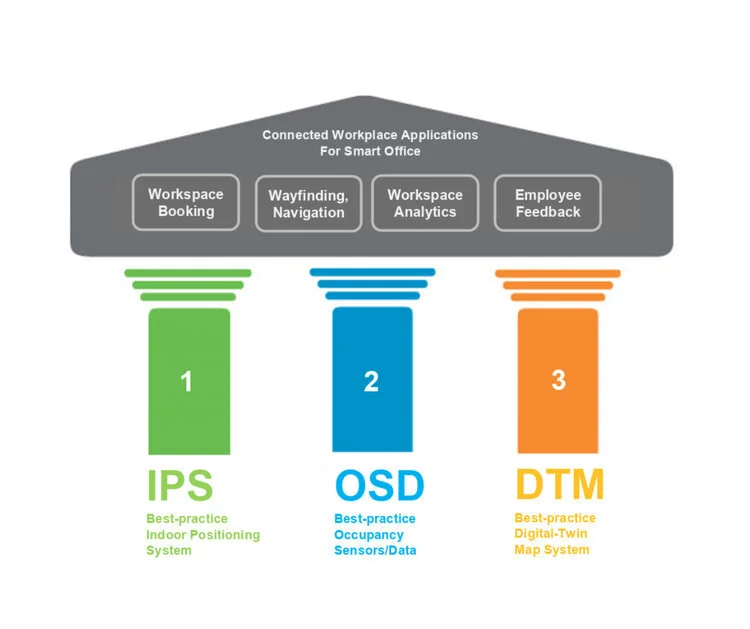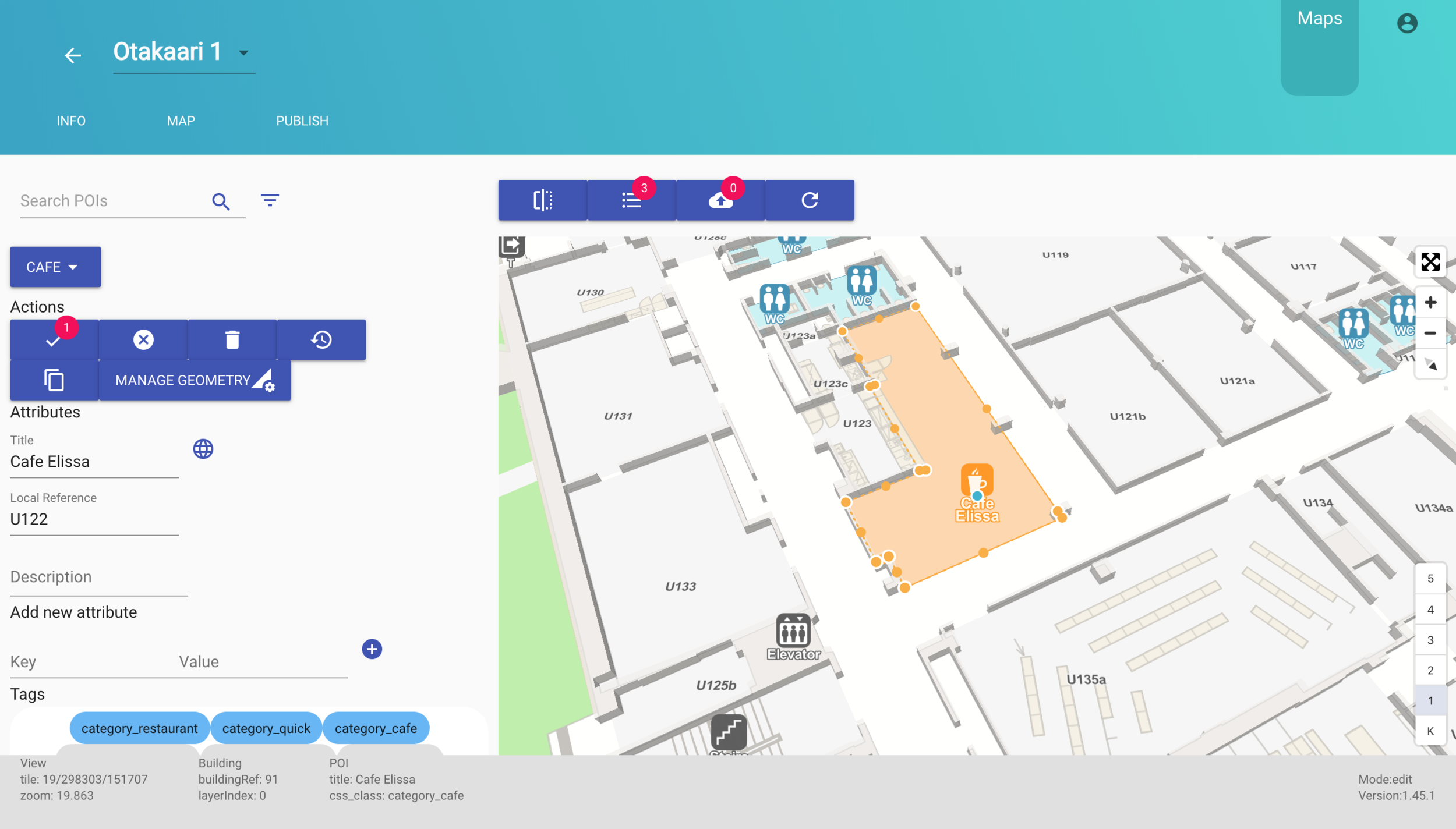Whether we like it or not, a change has come to the office workspace. Is it that cubicles are coming back, or that we all have to take a temperature reading at the door, or that we cannot sit in the same meeting room anymore, or what have you? Whatever it is, it will certainly include some ways to limit the office capacity for employee safety and will require tools to manage and allocate that capacity in a daily basis.
Based on the market feedback we have received during the last few months, in regard to the practical office management during and after the COVID-19, here are the functionalities you should include on your shopping list for office workspace app and tools:
Mobile desk and room booking: integrated with the corporate office calendars, MS 365 Office and/or GSuite. Workspace reservation software that works remotely on any device will keep your employees safe and give the management control over how rooms are being used and cleaned.
3D interactive office floor plan online: with search and find capability for points of interest and resources, available desks, rooms, hand-sanitizer stations, PPE storage, etc. Add your own points of interest and notes visible to all.
Office occupancy monitoring: real-time desk and room occupancy status and reports, based on occupancy sensors and calendar schedules. Who is in the office, now? How many people were there yesterday or last week?
Cleaning crew tools: a mobile app to easily mark which areas have been cleaned and when and post the cleanliness status on the floor plan map.
Indoor positioning: Opt-in feature to share your office presence and location with your team members, to improve collaboration. This enables Google-style turn-by-turn wayfinding indoors, to find the nearest available resource without wandering around, and supports directions for one-way office-flow rules for social distancing.
Off-site space booking during the peak demand: for allocating and reserving overflow space outside of the local office, in the company's own satellite offices and in 3rd party rental spaces, making office space available beyond the allowed max capacity.
What else is going on inside the post-pandemic office? Are there some new changes brewing under the hood that we may not see already? Let’s take a deeper dive to discuss that.
The Evolution of a Modern Workplace and Emergence of Workspace App
Before COVID-19, activity-based working i.e. hot-desking i.e. desk hoteling i.e. flexible-workspace, was gaining ground in corporate offices. This was because the CRE executives had noticed that on average 40% of the assigned office desk space was sitting idle, unused. What a waste of real estate dollars! And therefore, by moving from assigned to non-assigned desks, companies could increase the desk-to-employee ratio from 1:1 toward 1:1.5, and therefore optimize the office space for more efficient use. Before introducing flexible space, 150 employees had 150 desks, but with the new trend the calculation was that 100 desks will be enough.
The message from the management was: “If you cannot sit at your desk every day, because of the remote work or traveling or working from the sofa in the cafeteria, then we cannot afford to keep an assigned desk for you. Instead, before you come in the office, you need to pick a desk that happens to be available. “
How will COVID-19 now impact on that Activity Based Working trend? What this pandemic has proven already, is that working from home will not always decrease the office work efficiency - but may even increasing it. So, the work from home trend is likely to continue strong also post pandemic. According to the study by the University of Chicago, 37 percent of jobs in the United States can be performed entirely at home. And the big corporate world agrees: Among other large firms, Twitter has told many employees that they can plan to work from home forever. All this new movement is naturally creating additional concerns about the underutilized real estate space.
Post pandemic: hot desking on steroids?
With pre-pandemic hot-desking and post pandemic remote home office trends now colliding, what is going to happen to that desk-to-employee ratio? It is likely to swing to its extreme. The number of employees may not change, but the office of the future may be designed for much fewer desks.
In that hot-desking office example, above, you may have had 150 employees sharing 100 flexible space desks. In the post pandemic, pre-vaccinated environment, it has already becoming a norm to set a limit to the office capacity to max 25 or 30% of the total office space, to allow social distancing. This means that you would not like to see more than 30 desks out of 100, or 30%, being used at the same time. This brings the desk-to-employee ratio to 1:5! The question then becomes: how can you manage coordinate 150 employees using 30 desks in the office? Obviously, by using a workspace app for remote workspace reservation and sharing the real-time occupancy data.
There may be additional complexity when you dive into everyday logistics in more detail. In most of the offices, some desks/rooms are assigned, but some are non-assigned, and some areas maybe defined as neighborhoods where a team can work together. When you set the limit for the office maximum capacity, you must be able to provide allocation and remote desk booking rules for all these employee groups.
Also, some of the employee functions maybe more necessary to be in the office than others. Then you have to consider employee profiles: whose presence at the office is essential and whose is not, and set user permission levels for desk booking priority, accordingly. Business rules for the office occupancy will need to be agreed upon.
Before the employees will book a desk, they also may want to know: who else is in the office right now? Providing employees access to a live view to the floor plan, with visible occupancy and utilization status, is therefore also important.
All these rules and limitations create complexity that a receptionist at the lobby with her excel sheet cannot handle anymore. Welcome the employee workspace app and booking tools for the post pandemic office.
Steerpath Smart-office Solutions – Workspace App and More
Steerpath smart office solutions are unique on the market as they are designed to help both the management and employees. They are built to improve the office efficiency AND employee experience.
Related documents:
Related articles:










To coordinate the new hybrid work environment, a desk booking concept has been promoted as a potential solution, as it allows employees to reserve office desks and rooms only when they are needed. But do your employees actually need desk booking to return back to the office? Most often, no. They need a framework to collaborate and work better together.